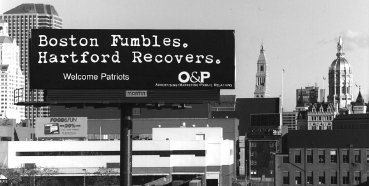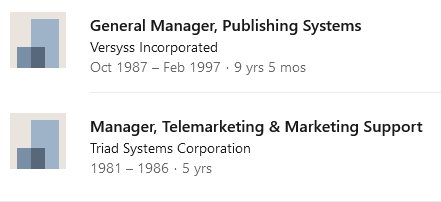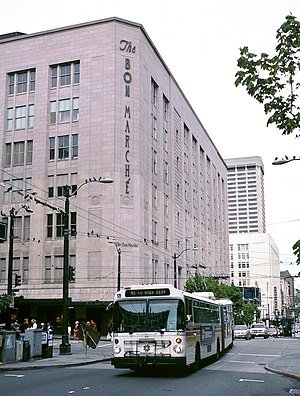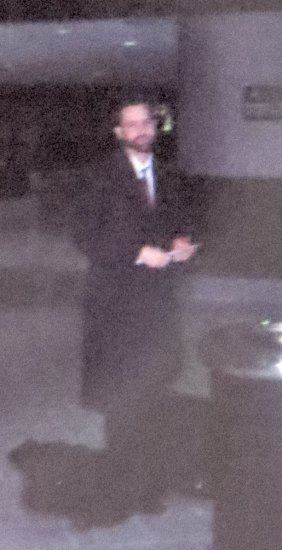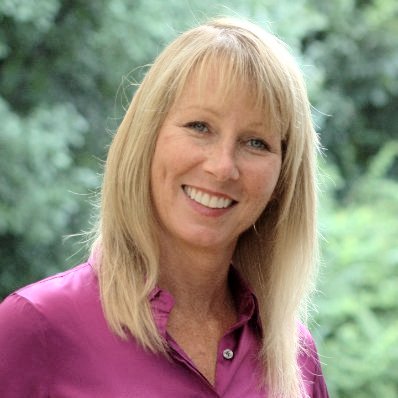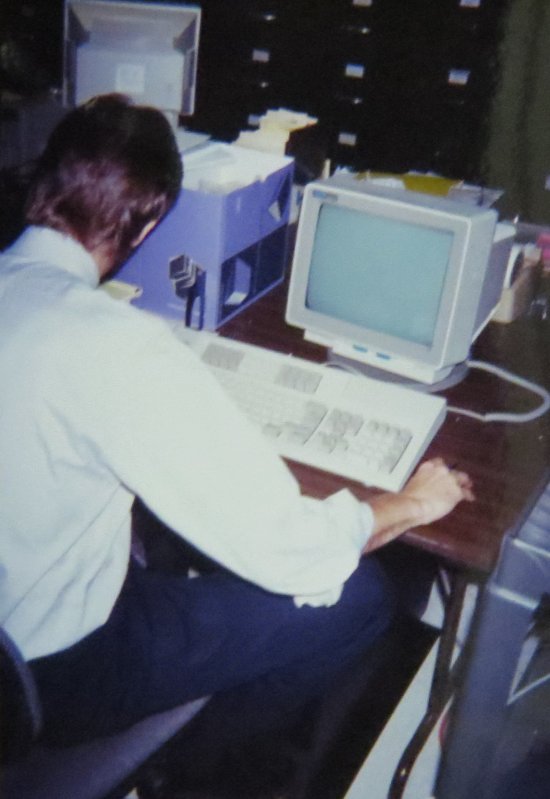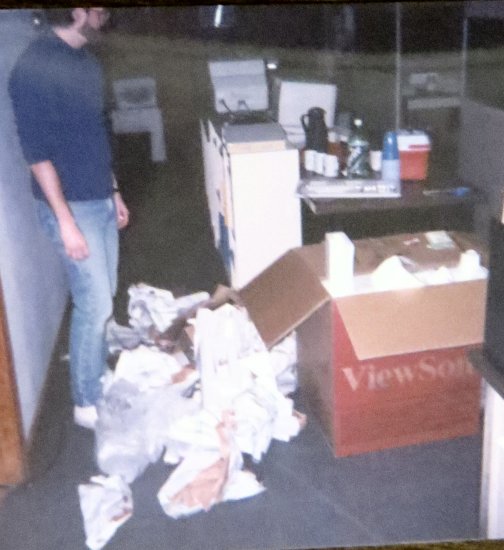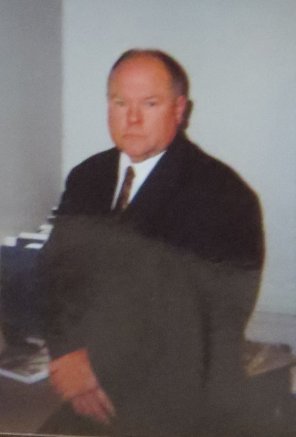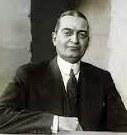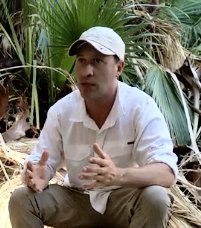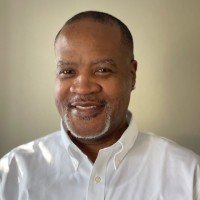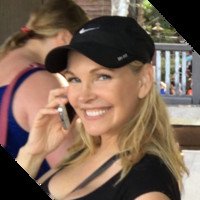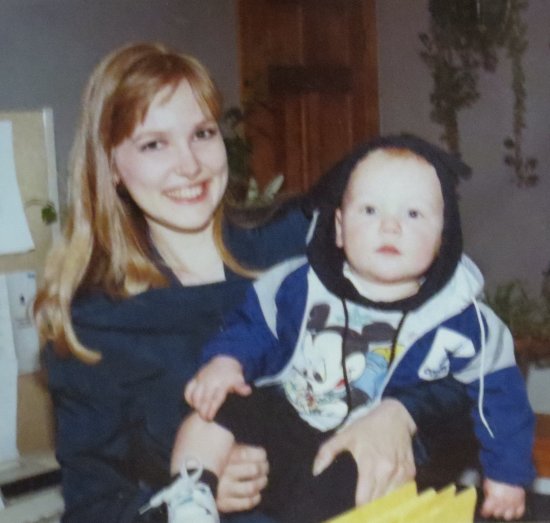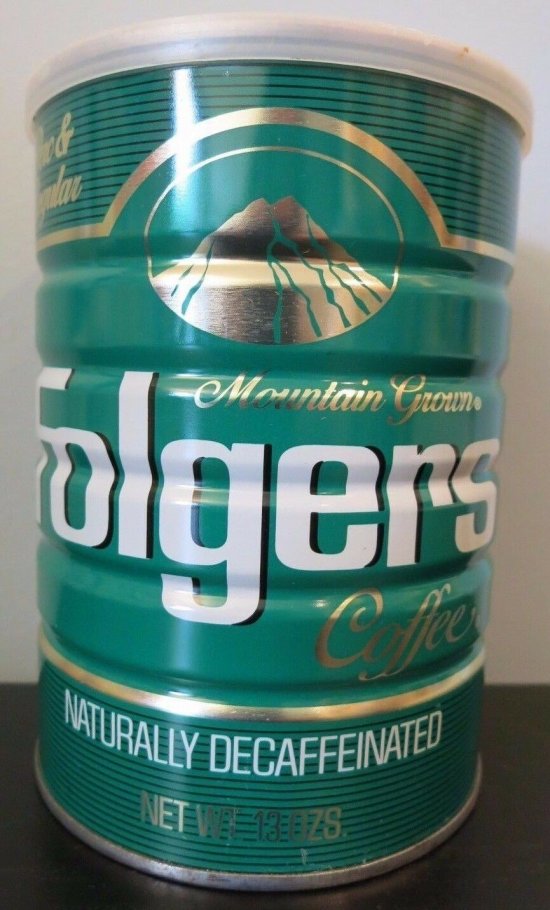TSI’s salesmen. Continue reading
By the mid-eighties Sue and I really needed help with marketing. We had some good products to sell, and our service was fantastic. However, our salesmanship was poor. I could often persuade people that I could develop a solution to a difficult problem, but I was not very good at persuading them that TSI’s product and approach were better than those of our competitors.
The first person whom we engaged to represent us was Joe Danko, who lived on Cape Cod. At first the relationship was on a commission-only basis. Later we considered hiring him as our salesman, but we decided against it. The details are described here. Joe was never actually an employee, and we never paid him for his services. I don’t know how much effort, if any, he put in on our behalf.
We hired some consultants to help us. They, in turn, hired a graduate student named Paul Schrenker, to sit in Sue’s office in Rockville when she was on the road. We provided a list of presidents of ad agencies and their phone numbers. In only a few cases was it a direct line, but, even so, quite a few people agreed to talk with him. Ad agency executives were all about relationships. Whether Paul was a potential client or a potential vendor did not matter that much; many agency heads were always on the lookout for connections. So, a surprising number of advertising executives accepted a cold call from a graduate student who knew a lot about biology but very little about any aspect of the business world.
One of the ad agencies, O’Neal & Prelle in Hartford, agreed to an appointment, and we eventually closed the sale. Paul did not participate in closing the sale, but he did make the first appointment.
TSI severed its relationship with the consulting firm. We decided instead to hire a full-time salesman, and we approached it in the same way we had recruited programmers and administrative people—by placing an ad in the newspapers. I think that we interviewed a couple of people. One stood out, Michael Symolon. He seemed excited about the job, and he was quite well-spoken. He was a graduate of Central Connecticut. He had worked in marketing for five years at Triad Systems, a company that specialized in software for dentists.
I think that we hired Michael at some point in 1987. His LinkedIn page, which can be found here, was no help in this determination. Although he included previous and subsequent employers, he left TSI off of his list of experiences. We paid him a pretty good salary as well as commissions.
I remember that when he first began to work at TSI Michael was gung ho about setting up a nationwide sales organization. He advised me to schedule annual trips to exciting destinations exclusively for the most productive reps of our software systems.
This attitude shocked me a little, but he eventually revised his expectations when he discovered how complicated the GrandAd product was. Our competitors could undercut us on price on the hardware, and there was not much that we could do about it. The key to selling was almost always our willingness to customize the system for the prospective client. The idea of setting up a network of sales agents seemed unworkable to me. If I could not deal with the people personally, how could I assess what changes were necessary and feasible?
We gave Michael room to be creative in his approaches, but I was not ready to discuss how to celebrate sales generated by imaginary salesmen.
Terri Provost left the company shortly after Michael was hired. Michael interviewed and hired Linda Fieldhouse to take her place as administrative assistant/bookkeeper. Both of them are described here. Michael assured me that Linda was “at least a nine and a half.”
I am pretty sure that Michael and I went on a couple of ad agency sales calls together. I remember driving up to Vermont with someone—it probably was Michael. When I got out of the car I realized that I was wearing the pants for my pin-stripe suit with my blue blazer. We did not get the sale, but I don’t think that my fashion faux pas was the cause. Vermont is not known for haute couture.
I also remember that Michael accompanied me to Keiler Advertising once. Evidently he had once dated Shelly, who at that time was in charge of bookkeeping there. Michael was very embarrassed by the incident. I did not ask him for historical details.
I don’t remember him closing sales of any new GrandAd clients.
Michael also came to New York City with me for at least one very important presentation to Macy’s in 1988. He was almost a hero, as is described here.
Michael invited Sue and me to supper one evening at his house in Farmington. We got to meet his wife and kids. It was a very nice house, but I don’t remember any details.
I am sorry to report that Michael was at the center of TSI’s first great crisis, which is described here.
I ran into Michael at Bradley International one day in late 1988. He told me that he was working for a company that sold advertising software to magazines. I told him that Macy’s had finally signed the contract, that I had been working my tail off to get all the software written and installed, and that TSI would send him his commission check as soon as we got the final check from Macy’s. There did not seem to be any hard feelings.
For a couple of years TSI muddled along without a salesman and with very little effort at marketing. Those were very difficult years in a number of ways. By the spring of 1991 the AdDept system had two pretty substantial accounts, and we felt that it was time to start marketing it seriously nationwide.
Meanwhile, our ad agency clients seemed perfectly content with their current hardware and showed no interest in converting to the AS/400, the system that IBM had introduced in 1988. It is described here.
We hired a young man named Tom Moran to help with marketing. He was a very nice guy, but he knew next to nothing about computers, advertising, retail, or, for that matter, marketing. He was definitely eager to learn, and he was willing to follow up on leads, which was the most important thing. Plus, both Sue and I liked him.
I remember going on two trips with Tom. The first was for a meeting with Hecht’s in Arlington, VA. Sue, Tom, and I drove down to the Washington area. A Motel 6 on the Maryland side of DC kept the light on for us, and I am happy to report that no murders were committed (or at least none reported) there that night. It was the first and last time that I stayed at a Motel 6.
The three of us met with Barbara Shane Jackson, who was in charge of Hecht’s patchwork PC system and her boss, the advertising director, whose name I don’t remember. Tom did not contribute much, but it was a good meeting on the whole. In the end we got the Hecht’s account.
Tom and I also attended RAC, the Retail Advertising Conference, in Chicago. It was a huge pain to get everything prepared for our booth there. We had to rent an AS/400 from IBM and to hire union employees to set everything up. Nevertheless, we did manage to get our demo computer system working by the time that the attendees came to visit the vendor area.
Some vendors who were familiar to us were there. Camex, the company from Boston that specialized in programming and selling heavy-duty Sun workstations for the production of ads, had an exhibit that was ten times as large as ours and had a dozen or more people. Tapscan, the broadcast software company. was right across the aisle from our booth. One young lady who worked there must have accidentally left her skirt at home. It appeared that over her black pantyhose and high heels, she was wearing a wash cloth that she purloined from her hotel room.
Most of the conventioneers were drunk or at least tipsy by the time that they reached our area. We made one contact with the ad director of Hess’s, a department store chain with headquarters in Pennsylvania. Tom gave him a copy of our sales materials and got all of his contact information. Unfortunately, almost as soon as we had begun correspondence with him, Hess’s was acquired by another retailer, and his position was eliminated.
The convention would have been a complete fiasco except for two things. The first was that I got to introduce Tom to the indescribable pleasure of Italian beef sandwiches purchased from street vendors in the Windy City.
The other redeeming event was the appointment that I had made to do a demo at the convention for Val Walser, the Director of the Advertising Business Office at The Bon Marché, a department store chain in the northwest. The programs worked without a hitch, and she was very impressed with what the system could do. She even invited us out to Seattle for a presentation to the relevant parties at the IBM office there.
Tom accompanied me on that trip, too. Our plane landed in Seattle very late, well after midnight. We checked into our hotel, but we only managed to get a couple of hours sleep. We went to the IBM office, where I checked that all of the software was working correctly. By this time I had been chain-drinking coffee for several hours, and still I felt very sleepy. This was an important presentation, and I had to be at my best.
The demo seemed to go pretty well. Everyone was attentive. The people from the IT department were asking tough questions, which usually boded well for us. I was so tired that I could barely concentrate. As we were putting away our materials I realized that I had been drinking decaffeinated coffee all day.
Nevertheless, I convinced Val and the other important parties. We put together a hardware and software proposal, and they submitted a requisition to the IT department, which also approved it. However, the powers that be at Federated Department Stores1, the mother ship, vetoed it.
This episode taught me that TSI needed someone who could navigate his way through the bureaucratic structure to find out what the hold-up was. Tom was not ready for this kind of responsibility. In the end, we decided that we could not afford someone who just tagged along for demos. In fact, we were really in the position where we could not afford anything.
Fortunately, we were able to use the Hecht’s installation as an entrée into the May Company, which at the time had about ten divisions. Not long after that I persuaded Foley’s in Houston to install the system, too. I also convinced Neiman Marcus in Dallas to get the system.
Those sales gave TSI both a solid base of accounts and enough revenue that we again looked for a marketing person in 1993. We found what we were looking for in Doug Pease, who had actually worked in the advertising department at G. Fox, the local May Company chain.
At first I had hoped that Doug could do some of the demos, but I soon gave up on that idea. I knew exactly what the system did, what it could potentially do, and what was beyond us. The programmers were generating a lot of code every week, and so these lists were in a constant state of flux. Besides, I had a great deal of experience at public speaking, and Doug did not. I don’t think that I would ever have trusted anyone with the demos.
Doug was a real bulldog once he had a hot lead. He was extremely good at following up on everything. In his first year we closed extremely profitable sales to Lord & Taylor, Filene’s Basement, and Michaels Stores.
In April of 1994 I received an email from a woman named Susan Sikorski, who worked at Ross Roy Communications, Inc. in Bloomfield Hills, MI. The company at the time had eight hundred employees (!) and seven satellite offices. They wanted a production billing system that would feed their Software 2000 accounting system and some internally developed applications.
A few years earlier I would have considered this opportunity a godsend. We had already written interfaces for Software 2000 accounting systems for two AdDept clients. We loved to do interfaces, and the more complicated they were the better. However, we were so busy with programming for clients that Doug had landed that this was my response:
Unfortunately, as I looked over your package, I realized that our system does not really measure up to your requirements. We would have to make very substantial modifications to meet even the minimal requirements. Since we specialize in custom programming, this would not ordinarily be a great issue to us, but at this time we would not even be able to schedule the work for many months. So, I guess that we will have to mass.
And it was almost certainly a good thing that I was forced to make that decision. In 1995 Ross Roy Communications was purchased by the mega-agency called Omnicom Group. If TSI had been chosen for the project, I strongly suspect that the plug would have been pulled on it before the system became fully operational. Susan found a new job at Volkswagen in 1996.
Meanwhile, in the next few years Doug managed to get TSI’s AdDept system into all of the remaining May Company divisions, as well as Elder-Beerman, the Bon-Ton, Stage Stores, two Tandy divisions, Gottschalks in California, and all but one of the five divisions of Proffitt’s Inc., which later became Saks Inc..
Doug and I took many sales trips together. The most memorable one was in December of 1997 to Honolulu to pitch Liberty House3, the largest retailer on the islands.
We had a little free time while we were there. Doug and I used it to climb to the top of Diamond Head together. He was an enthusiastic mountain biker, he had been a soccer player in college, and he was quite a bit younger than I was. I was in pretty good shape from jogging. So, neither of us held up the other.
Sue accompanied us to Honolulu, and after Doug returned home, she and I had a great time on four different islands, as is described here.
The other trip that was the most memorable for me was when we flew to Fresno, CA, to pitch Gottschalks, a chain of department stores in the central valley.
In those days you could save a lot of money by flying on Saturday rather than Sunday—more than enough to pay for a day’s food and lodging and a car rental. Doug and I considered going to Yosemite on our free day, but there was a problem with the roads there. Instead we decided to drive along the coastal highway from north to south to maximize our views of the coastline.
I did not have a camera, but Doug did. His was a real camera of some sort. I was not yet into photography, and I had not brought a disposable camera on the trip. Doug took lots of photos. In fact, he ran out of film. When we stopped for lunch he bought some more film.
Doug took a lot more photos on the rest of the journey, or so he thought. When we got to Fresno he discovered that he had no photos at all after lunch. I don’t remember whether he forgot to load the camera after he took out the film. Maybe he did not wind it, or there was a technical problem. That was not the worst of it. He also somehow lost the first roll of film when we stopped for lunch, and it also contained the photos of his newborn child taken before we left.
But, hey, we got the account.
Doug and I almost never disagreed about what the company should be doing. However, near the end of his tenure he came up with an idea that I just could not sanction. He wanted us to start a new line of business in which we contracted for large chunks of advertising space from newspapers at a discount and then resold it to small businesses at a profit. Maybe he could have sold a lot of space; maybe he couldn’t. In any case such an undertaking would leverage no TSI products or services and none of the skills that the rest of us possessed. In short, he was asking me to backstop a new source of revenue for him. I declined to do so.
Doug and I made a great team. I gathered specs and did the demos. He attended, met the players, and subsequently followed up on everything. When the prospect had signed the contract, he made sure that all the i’s were dotted and the t’s crossed and ordered the hardware if they bought from TSI or a business partner.4 By 1999 we had more work than the programmers and I could handle. I told him to stop selling new software systems until the programming backlog could be reduced to a more manageable level, which would not be for at least a year. He made the imminently reasonable decision to look for another job.
After TSI moved to East Windsor in late 1999, we hired one more AdDept salesman, Jim Lowe. His previous experience was with a company that marketed hard cider. The challenge was to get retailers to give them adequate shelf space. It was retail experience, but not exactly the kind that we had dealt with.
Jim was a smart guy, and he could have been a good salesman for us. We went on a trip together to Wherehouse Music in Torrance, CA. Wherehouse was a large chain of music stores in California. Jim and I stayed in a nearby Holiday Inn the first night. We used MapQuest to find to the Wherehouse headquarters the next morning. At the very first turn MapQuest advised us to turn right. This seemed wrong to me, and I turned left instead. We reached the building in less than ten minutes. I don’t know when we would have arrived if I had turned right.
It was a very strange meeting. Rusty Hansen, whom I knew from Robinsons-May, had told them about us. We never got to meet with him or anyone else who seemed to know what they wanted. We did get to meet the president of the company, who was wearing jeans and a tee shirt. I never did figure out what this whole episode was about. The company went out of business within a couple of years.
Jim only worked for us for a few months. He took an offer that was very similar to his old job. Before he left he helped me with a mailing that produced some good leads. I sold the last few AdDept systems to some of those retailers by myself.
Jim’s advice to me when he left was that TSI should concentrate on AxN, which is described here. I don’t think that he ever really understood that the horse must precede the cart. We needed retailers to be sending us insertion orders in order to be able to send them to newspapers.
Bob Wroblewski was, as I recall, a relative of Denise’s husband. In November of 2003 Denise came up with the idea of paying Bob to get the newspapers signed up.
I got to know Bob on a trip taken by the two of us to California to persuade Rob-May and Gottschalks to use AxN. We both misjudged how well the two demos went. The people at Gottschalks seemed excited; Rob-May was somewhat cool. However, Rob-May soon came around, and I never did persuade Stephanie at Gottschalks to use AxN.
Here is how the marketing process worked. After a retailer’s advertising department that scheduled its newspaper ads in AdDept agreed to use AxN for insertion orders, it provided us with a list of its newspapers with contact information. I wrote a letter to each paper asking them to subscribe to the service. The letter was printed on the retailer’s letterhead and was signed by the advertising director or ROP manager at the newspaper. However, it was sent by us along with a contract that I had signed. The monthly rate was approximately what the newspaper charged for one column inch in one issue. This was a negligible fraction of what the advertiser spent. Then Bob called each one and persuaded them to sign up.
I don’t know (and I don’t want to know) what Bob said to the papers, but he had a very high success rate. He also earned quite a bit for himself in commissions. At one time we had over four hundred newspapers that subscribed for the service!
Bob’s wife died while he was still working with us. I drove to Providence, which is where he lived, for the wake.
1. Federated Department Stores owned many large chains that were all very promising potential AdDept clients. The rejection of The Bon Marché’s request may have been a blessing in disguise. In January of 1990, shortly after this meeting, Federated filed for Chapter 11 bankruptcy protection. It could have been really ugly.
2. Susan Sikorski is apparently working as a consultant for Avaya in 2021. She is featured as a graduate of Wayne State on this webpage.
3. We learned later that the advertising department at Liberty House had approved the purchase of the AdDept system, but the order was never placed because in March of 1998 Liberty House filed for Chapter 11, and the funds for new systems were frozen.
4. TSI was throughout its existence a certified member of IBM’s Business Partner program. However, because of the size of the company we were bit allowed to sell IBM hardware directly. Instead, we needed to pair up with a “managing Business Partner” who actually could place orders. We dealt extensively with several of these companies—Rich Baran, BPS, Savoir, and Avnet. There may have been others.


